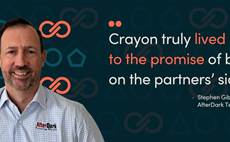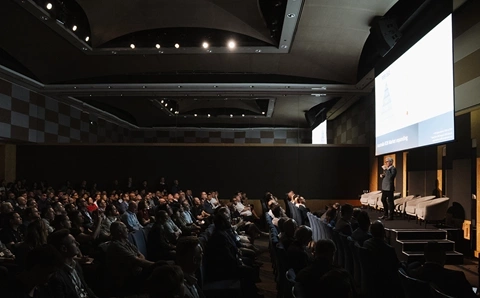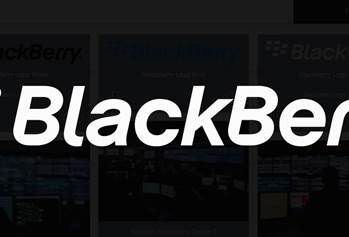HubSpot wants CRM to be seen as the solution to what it describes as a “crisis of disconnection” between businesses, their partners and customers.
It is pushing the message that proliferation of digital technology during the pandemic has made it harder for companies to connect with their data, systems and customers.
Businesses “are in a crisis of disconnection today,” stated HubSpot chief executive officer, Yamini Rangan. “They’re disconnected from their customers, as buyers tune out saturated channels. They’re disconnected from their peers in a more hybrid world.”
There has been a 37 percent increase in the average number of SaaS applications being used by businesses globally since 2020, according to HubSpot.
For “many businesses, this has meant their tech stack has become a disconnected patchwork of platforms and software,” HubSpot’s APAC marketing director Kat Warboys noted. This can make it harder to get a consolidated view of the customer.
Shifts in buyer behaviours have also made it harder for organisations to create meaningful connections with them. “With the acceleration of digitisation and consumerisation, buyers are now more independent, and expect more intuitive experiences from businesses,” Warboys said.
“Effective customer relationship management, via the right tools, gives businesses the option to sync buyer data, understand purchasing habits from a suite of segmentation tools and personalise communications with customers,” she added.
Customer connection, not customer management
“We believe the businesses who will win in the future are the ones who focus on customer connection, not customer management,” Rangan said.
With this in mind, HubSpot announced a range of tools at its recent HubSpot INBOUND event in the US. These include payment schedules which enable HubSpot merchants to customise payments through a collection of dates and amounts. Additionally, quote-to-cash solutions are design to save teams time through the quoting, billing and contracting process.
HubSpot also released new data management enhancements to provide “transparent and timely data insights” through import error handling and automation. Data quality automation recommendations aim to eliminate manual fixing of data errors. Using HubSpot AI assistance, customers can set up automation to resolve issues as they surface.
Customer journey analytics, available in public beta later this year, will provide marketers with detailed visualisations designed to make it easier to identify moments in the customer journey that can be optimised for better conversion, and deeper insights into customer behaviours. HubSpot also announced enhancements to campaigns to provide marketers a consolidated view into all initiatives together.
New features to help customer service teams create more connected experiences were also announced. Teams using Service Hub can now interact with their customers through a fully connected service desk, with a helpdesk, channels and automation.
New WhatsApp integration, available via public beta, enables teams to connect a WhatsApp business account to their shared inbox to communicate with prospects and customers without leaving the HubSpot platform. Inbound calling enables customers to make and receive calls from HubSpot without exposing their personal phone numbers.
HubSpot also touted new features to keep customer data connected, clean and secure. The custom object builder allows teams to craft customised data models without code and enforce consistent data entry with property validations.
And its new AI assistant feature provides metrics to inform marketing strategies, such as SEO and optimised timing. This information could be used to recognise the unique needs of potential clients, create personalised connections and maintain relationships.
Warboys told CRN, “when AI is done right, it saves your team's time while simultaneously creating a tailored experience for consumers, at scale. It’s a more sophisticated and personalised approach towards inbound marketing and a more personal connection with the help of AI.”
In CRM platforms, AI can help with business efficiency by allowing users “to set up automation to resolve any issues in real time as they surface,” Warboys said.
Integration mantra
Unsurprisingly, HubSpot claims that when companies use a fully integrated all-in-one CRM platform, they see better “data connectedness”.
It also pushes the line that companies see greater return on investment from fully integrated CRM tech stacks. More point solutions drive higher cost of ownership, primarily driven by increasing personnel costs associated with using multiple tools, the company states.
CEO of Salesforce consulting partner FullCRM, Helen Peterson, also espouses the benefits of fully integrated CRM platforms for achieving customer connections. Customer service, marketing, ecommerce and service domains within businesses “would be more interested in CRM” than multiple unintegrated systems, she argued.
She also noted the high “costs to integrate between several systems.”
Another consideration, in Peterson’s view, is that “many operational systems are product-based, rather than being customer centric, which makes it very difficult for businesses as the customer isn’t the focus.”
Gartner UK VP CRM analyst, Julian Poulter, acknowledged the importance of “having a single unified view of the customer data in one place, that all aspects of managing the relationship (sales, service) can leverage and activate.”
“If the [CRM] components are in different systems, or the data is not unified then it makes it hard to execute a good customer experience. For instance, if someone has raised a complaint, do we want to send them a marketing offer five minutes later? Probably not, but this is dependent on the data being pulled together,” Poulter said.
CRM suites that have a common data model have a “significant advantage over unintegrated systems,” he noted.
However, a 2022 CRM Gartner report stated that “only small and some midsize organisations are successful in meeting all their goals with a single CRM application. In general, the larger the organisation, the larger the number of CRM applications in use, and the more integration needed. This is due in part to the political nature of CRM, where different geographies, brands, divisions and departments have different, sometimes conflicting, objectives.”
Poulter told CRN that “some organisations do undertake an organisation-wide CRM implementation,” but “given the politics between departments, getting agreement on this can be very challenging. Hence, why leading organisations like Salesforce and ServiceNow sell C-Level digital transformation messages, rather than just CRM.”
“HubSpot’s sweet spot is the mid-market enterprise, and its legacy was small and medium sized enterprise customers. In these smaller organisations, the issues are less challenging and its easier for them to decide to implement the whole thing,” he commented.












.jpg&w=100&c=1&s=0)
_(8).jpg&w=100&c=1&s=0)








.jpg&q=95&h=298&w=480&c=1&s=1)


